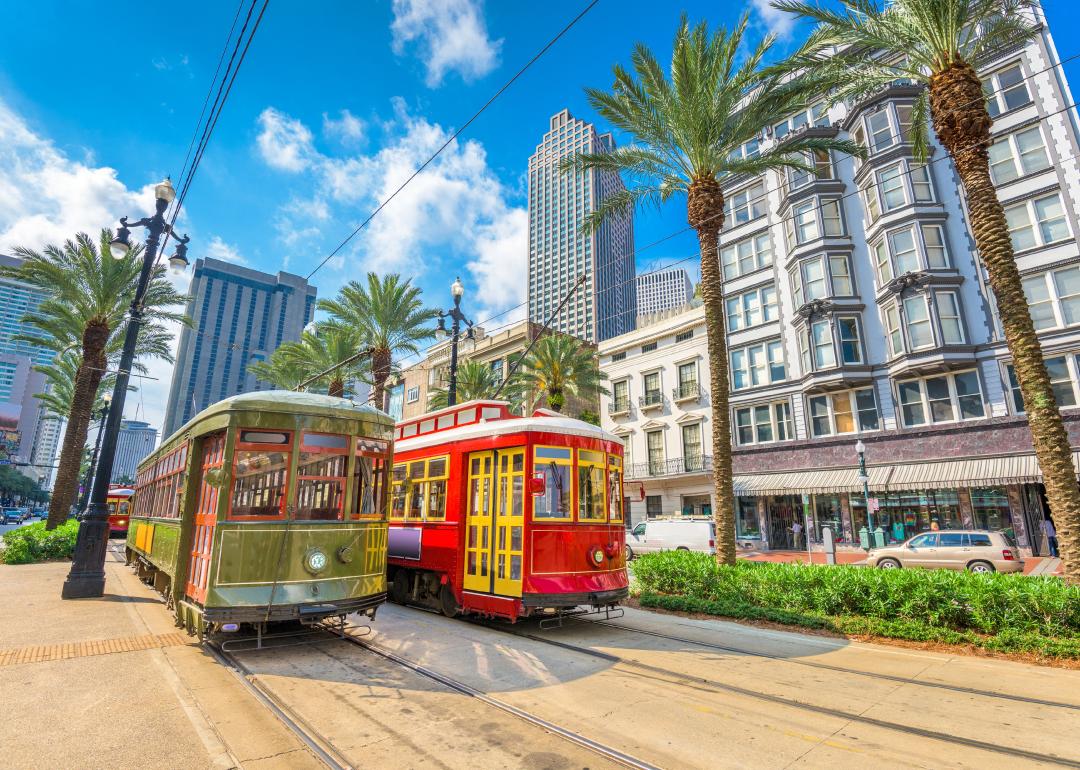
What the ongoing worker shortage looks like in Louisiana
This story originally appeared on JobTest.org and was produced and distributed in partnership with Stacker Studio.
What the ongoing worker shortage looks like in Louisiana
By now, the headlines are likely familiar: The "most unusual job market in modern American history." The "Great American Labor Shortage."
The massive disruption to the job market wrought by the COVID-19 pandemic, when by the latter half of 2021 almost half of American companies were reporting a worker shortage, impacted every corner of the nation. Since then, however, the job market has shifted back to more typical levels of employment, giving many Americans a renewed sense of normalcy.
But some industries and parts of the country are still hurting for workers—a trend with ongoing ramifications for consumers and workers alike.
JobTest.org analyzed Bureau of Labor Statistics data compiled by the Chamber of Commerce to illustrate the current state of Louisiana's ongoing labor shortage based on a national analysis. The analysis uses the most recent data available at the national and state levels, from July and June 2024 respectively.
According to government jobs data, there were 8.2 million open jobs in the U.S. in July and only 7.1 million unemployed workers. Even if every unemployed worker had a job, the nation would still have millions of unfilled positions.
A shortage of workers can be a double-edged sword for consumers. When there are jobs available, it can give workers some leverage to negotiate higher wages. But a worker shortage can also cause companies to raise the price of the goods and services they offer to cover wage increases to attract more job candidates. In the case of industries like health care or public education, difficulty finding skilled professionals to fill open positions can also make it harder for institutions to provide necessary services to the communities they serve.
Not every unemployed worker is suited for the jobs available, however. As seen in recent years, workers in some metro areas have seen their cost of living rise so dramatically that the jobs offered in industries for which they may be qualified—such as hospitality, food service, and retail—are no longer appealing or even feasible to cover basic expenses like housing, food, and transportation.
With job openings clustered in specific areas, location also influences companies' ability to find qualified workers that fit open positions. Only three states—Washington, Nevada, and California—had more unemployed workers than job openings.
Over the last few years, as job openings far exceeded the unemployed population, reports have suggested that labor shortages could be due in part to discrepancies between workers and employers, with mismatched expectations on wages being among the most prominent. In response, employers have raised pay in certain industries like hospitality to attract viable candidates.
Take a look at how your state stacks up below.
June Louisiana employment at a glance
- There were 69 workers for every 100 jobs available in the state.
- Companies in the state had 37,000 fewer workers compared to what would be needed for full employment.
- The unemployment rate for the state was 4.0%.
Top 10 states where jobs outpace available workers
10. Montana: 52 workers per 100 jobs.
9. Wyoming: 50 per 100 jobs.
8. Maine: 50 per 100 jobs.
7. New Hampshire: 49 per 100 jobs.
6. Mississippi: 49 per 100 jobs.
5. Virginia: 48 per 100 jobs.
4. Maryland: 48 per 100 jobs.
3. Vermont: 44 per 100 jobs.
2. South Dakota: 40 per 100 jobs.
1. North Dakota: 35 per 100 jobs.
This story features data reporting and writing by Dom DiFurio and is part of a series utilizing data automation across 50 states and Washington D.C.



